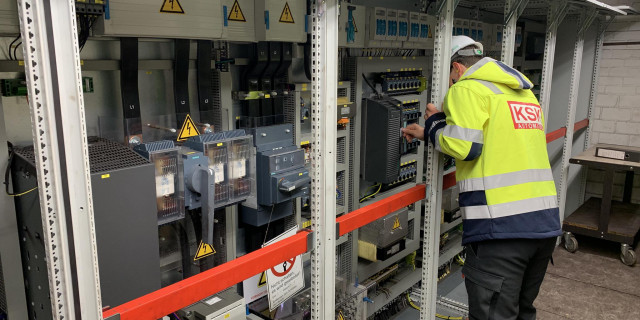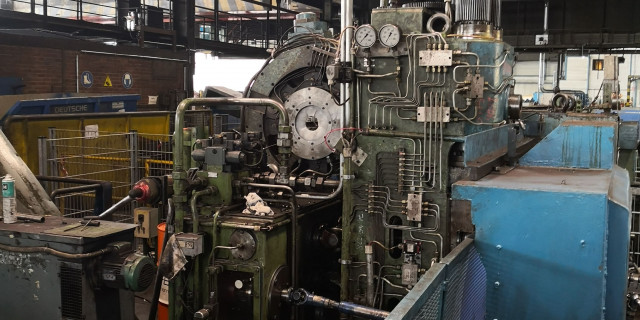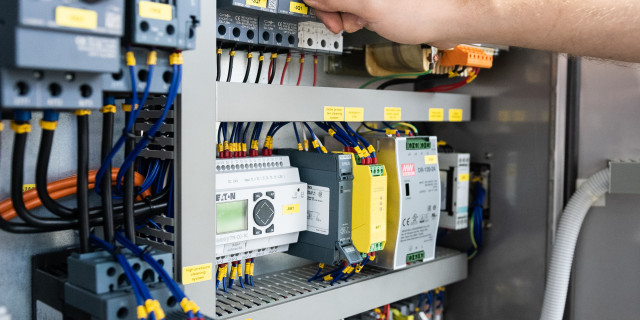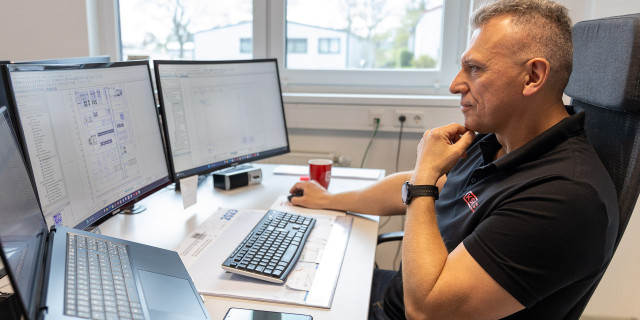
Shift gears faster.
The basis for the design of our switchgear is always a clear and concise circuit diagram. Our electrical engineers have the necessary expertise and in-depth knowledge of the CAE system EPLAN P8, ensuring fast and standard-compliant documentation.
Table of contents
- Effective electrical design: planning, drafting, and engineering
-
What is electrical design and why is it important?
- Definition and fundamentals of electrical design
- Significance for electrical engineering and systems
- Types of electrical design in modern engineering
Effective electrical design: planning, drafting, and engineering
Effective electrical design requires a deep understanding of both the theoretical fundamentals and practical applications of electrical engineering. This article highlights the importance and methodology of electrical design and its role in modern control cabinet manufacturing. It also explains how to choose the right partner for electrical design and outlines the challenges and solutions that exist in this field.
What is electrical design and why is it important?
Definition and fundamentals of electrical design
Electrical design refers to the process of designing, planning, and implementing electrical systems. Various technologies, such as automated machines and PLC programming, are of crucial importance here. However, electrical engineering goes beyond simple design, as it requires a comprehensive understanding of technical requirements and standards in order to implement safe and efficient systems.
Significance for electrical engineering and systems
Electrical design plays a key role in electrical engineering, as it forms the basis for the safe and efficient commissioning of electrical systems. The precise creation of circuit diagrams and wiring diagrams ensures that all electrical components are correctly connected and that the system functions reliably. This planning is not only important for current use, but also for future maintenance work and expansions.
Types of electrical design in modern engineering
Modern electrical design encompasses a wide range of applications, from the planning of simple control cabinets to complex, automated plant systems. Advanced technologies such as digital electrical design and specialized software are used to optimize and accelerate the design process. The wide range of electrical design thus covers various areas, from project planning to the detailed creation of design documents.
How do you plan an efficient electrical design?
Important steps and methods in planning
Planning an efficient electrical design begins with a clear definition of the project requirements and a comprehensive plan. All relevant factors, such as technical requirements, safety guidelines, and specific standards, must be taken into account. The selection of suitable components and their configuration also play an important role. The creation of detailed circuit diagrams and wiring diagrams forms the basis for further design work.
Consideration of norms and standards
An essential aspect of electrical design planning is compliance with applicable norms and standards. These guidelines not only ensure the safety of the systems, but also their interoperability and sustainability. In electrical engineering, norms such as DIN and IEC regulations as well as specific safety regulations must be observed in order to meet legal requirements and quality standards.
Important technical requirements and fundamentals
The technical requirements in the field of electrical design are based on the specific needs of the respective application. These include aspects such as electrical power, the type of control systems, and the integration of automation technologies. A deep understanding of these requirements and their technical implementation is crucial for designing and operating a functional and efficient system.
What role will electrical design play in the future of switch cabinet manufacturing?
Trends and innovations in switch cabinet construction
Modern technologies are becoming increasingly important in switch cabinet manufacturing. Trends such as digital electrical design and the use of advanced software enable more precise and efficient planning and manufacturing of switch cabinets. These developments help to increase the quality and reliability of the end products while reducing production costs.
Modern engineering and automation
Automation plays a central role in modern switch cabinet construction. The use of automated machines and robots allows many work steps to be carried out faster and more precisely. In addition, modern engineering methods enable the integration of complex control systems that ensure flexible and reliable system performance. These techniques significantly reduce the workload and support employees in switch cabinet manufacturing.
Advantages for companies and customers
The further development of electrical design and its application in switch cabinet construction offers numerous advantages for both companies and customers. Companies benefit from more efficient production processes and increased flexibility, while customers receive reliable products tailored to their specific requirements. In addition, advanced technologies enable faster commissioning and maintenance of the systems, which in turn reduces operating costs.
How to choose the right partner for electrical design?
Criteria for selecting a suitable partner
When selecting a partner for electrical design, various criteria must be taken into account. These include technical expertise, understanding of applicable norms and standards, and experience in the specific field of electrical design. A professional partner should also be able to offer comprehensive support in the planning and implementation of projects, thereby contributing significantly to the success of the project.
Experience and know-how as success factors
Experience and practical know-how are decisive factors for the successful implementation of electrical engineering projects. A partner with extensive experience can draw on proven approaches and develop innovative solutions that meet specific requirements. In addition, knowledge of the latest technological developments and their integration is of great importance in order to design future-proof and efficient systems.
Examples of successful partnerships
There are numerous examples of successful partnerships in electrical engineering that demonstrate how important it can be to work with a competent partner. Companies such as Siemens have contributed significantly to the further development of their products and technologies by working with specialized partners in electrical engineering, thereby achieving significant advantages in the market. These partnerships are based on trust and common goals, which ultimately leads to outstanding results.
What are the challenges and solutions in electrical design?
Complex requirements and how to overcome them
Electrical engineering faces a variety of complex requirements, such as integrating new technologies, complying with strict safety regulations, and meeting tight deadlines. Solving these challenges requires careful planning and a comprehensive understanding of technical and regulatory requirements. However, these challenges can be successfully overcome through the use of advanced software tools and technical expertise.
Technological developments and their integration
The continuous development of technologies presents electrical engineering with ongoing challenges. These include the integration of automation systems, the use of cloud-based engineering tools, and the implementation of leaner, more complex control systems. It requires advanced technical knowledge and a high degree of flexibility to keep pace with these developments and successfully integrate them into existing systems.
Best practices and proven approaches in the industry
Best practices and proven approaches are essential for successful electrical design projects. These include the accurate documentation of all project phases, regular review and updating of technical requirements, and collaboration with experienced and competent partners. These approaches help to ensure the quality and reliability of electrical designs and guarantee long-term success.


Crane Automation

Retrofit

Control cabinet construction


